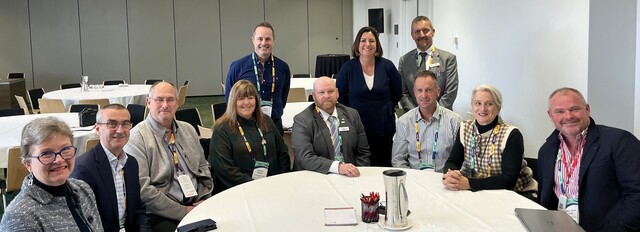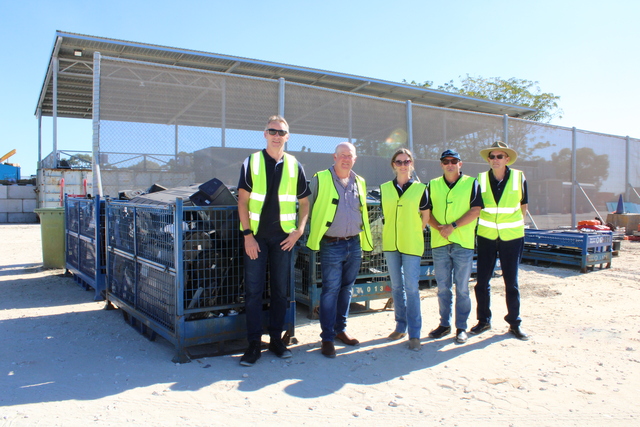The Good Oil by Rod Brown *
Professor Mike Berry (RMIT) recently reviewed the determinants of regional economic success in a paper titled, Innovation by Design: The Economic Drivers of Dynamic Regions. His analysis of the two approaches – the neoclassical school, and the new growth theory school – is timely because they represent the basic policy camps here in Canberra.
Berry says the neoclassicists see innovation as an exogenous (given) factor – material welfare is achieved through the promotion of perfect competition, with firms responding to prices. Competition is driven by the law of diminishing returns to scale. Policy prescriptions in this view of the world tend to be preoccupied with micro-economic reform – including removing barriers to entry, improving consumer knowledge, eschewing proactive industry policy, confining government interventions to the correction of price signals for externalities such as public research.
By contrast, new growth theory (NGT) says innovation is an endogenous factor, with firms forging a continuing market advantage by being the first to create a compelling new product. This school of economists argues that direct policies are needed to help firms innovate and exploit the opportunities created by imperfect knowledge on both the demand and supply side of the market. These policies focus on skills development, promotion of sectors, competencies or industry clusters where there is a reasonable prospect of increasing returns to scale for the region or nation.
So what you say? Well, it is amazing that the neoclassicists still hold sway here. They are invariably the bureaucrats and advisers who lack real world experience. If they had, they would understand how NGT must be the basis for lifting our pitiful trade performance in high value manufactures.
Free Trade Agreements (FTAs) with the USA and China are extremely risky without a strong industry policy aimed at building strategic industry competencies and global supply chains.
Wise man from Mauritius
High performing CEOs are invariably good networkers at a number of levels. Thus, the following statement is, to my mind, so brilliantly true that it deserves a gilt edged frame.
“The key to success lies in connectivity. Innovation emerges when there are interconnections and interdependencies, where we work outside the parameters of what has been done before and seek out new possibilities. We all have the ability to connect one idea with another, to find an idea in a different organisation, in a different industry or field of activity and connect it with another to solve the problem at hand. Why can’t we be like a child with a bucket of Legos constantly combining and recombining ideas, images and thoughts into different combinations? Most great ideas, I am fully convinced, rarely come fully formed in a single bolt from the blue – they are combinations of ideas. We can all regain our lost creativity.” Honourable S Fowdar, Minister for Training, Skills Development, Productivity and External Communications speaking at the Innovation Summit in Mauritius, September 2004).
For more information email natpro@intnet.mu
Lifeline for regional universities?
Australia’s chief scientist, Robin Batterham, wants universities’ efforts to establish links with local businesses recognised and rewarded with funding. It would be part of an overhaul of how the Federal Government distributes its research funds. He said there was an important role for regional universities in particular to reach out to their local business communities adding that ‘third arm activities’, such as helping companies with their commercialisation strategies, hosting summer schools and placing students with companies, need to be legitimised.
Dr Batterham is well known for his support of clustering and the pursuit of stronger research-industry links. His ideas are expected to be included in a discussion paper for imminent release.
The significance of his ‘third arm’ idea, which is well understood in the UK and the USA, is that it could provide a very important lifeline for a number of regional universities, and indeed for regions where micro businesses are more commonly found. Numerous reports have recently noted the decline of regional universities due in part to a funding regime that places emphasis on top end research and teaching, which has tilted the funding to the major city based universities.
Watch this space.
Are you crazy?
Some colleagues in the USA have pointed us to a new book, The Hypomanic Edge: The Link Between (A Little) Craziness and (A Lot of) Success. Author John Gartner contends that there is a genetically based condition responsible for a person having high energy, creativity and a propensity for taking risks – all hallmarks of successful entrepreneurs. From Columbus discovering America to Craig Venter decoding the human genome, the Hypomanic Edge takes you through five centuries of the “American entrepreneur.” Visit www.hypomanicedge.com
Why doesn’t someone in Oz start a similar exercise? It would make fascinating reading to get into the minds of our current batch of entrepreneurs and movers and shakers like Dick Smith, Ita Buttrose, John Singleton, Rupert Murdoch, Janet Holmes a Court, and Ron Walker. A common trait would be a fanatical desire to push the envelope. Good thesis for a doctorate.
Speaking of Singleton, he flew down to Melbourne to address Marketing 101 students at Monash in the early 1970s. The lecture theatre was jam packed with 300 plus pimply, longhaired students. His core message was that you MUST satisfy the customer – if you don’t you go broke!
He then stared straight at a guy in the second last row and said ‘Christ mate, what possessed you to buy that tie? You are satisfied, I trust?’ The massed students hooted with laughter. The student was a part timer sitting next to me, and his tie was huge, purple and psychedelic. We both blushed profusely as 300 sets of eyes swung around.
“My mother bought me this tie as a birthday present, so why don’t you bugger off,” he stammered.
More laughter from the starry eyed students. Singo was using the banter to market his message. Thirty years on, he shouts every bar at Randwick when one of his horses wins a feature race. Another cost effective marketing tool by a crazy, successful entrepreneur.
* Rod Brown’s Canberra based consultancy group, Australian Project Developments Pty Ltd, specialises in industry/regional development and government liaison. For further information telephone (02) 6231 7261 or email apd@orac.net.au







